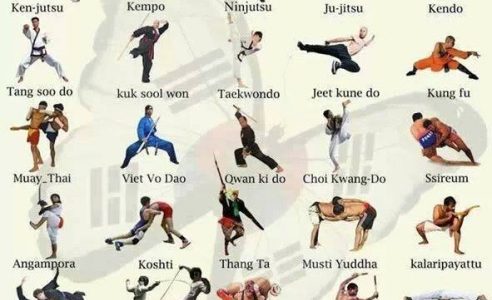Unraveling The Secret Of Numerous Fighting Style Techniques: An Overview To Martial Arts, Taekwondo, And More
Unraveling The Secret Of Numerous Fighting Style Techniques: An Overview To Martial Arts, Taekwondo, And More
Blog Article
Article Created By-Faber Clay
Are you tired of sensation bewildered by the large world of fighting styles? With so many styles to choose from, it can be simple to get shed in a sea of strikes, kicks, and strange names. Yet anxiety not!
This conversation will certainly demystify the different fighting styles designs, taking you on a trip from the effective strikes of Karate to the dynamic kicks of Taekwondo. Prepare yourself to reveal the beginnings, strategies, and approaches behind these ancient art types.
So, tighten your belt and prepare to embark on an informing expedition into the fascinating globe of fighting styles.
Origins of Martial Arts Styles
The beginnings of fighting styles designs can be mapped back to old civilizations and their demand for self-defense and fight strategies. Throughout background, various cultures developed their own unique techniques of fighting, each with its very own set of methods and approaches.
In China, as an example, fighting styles designs such as Kung Fu and Tai Chi were created as a means of protection and improving physical and mental health.
In Japan, the samurai warriors created designs like Martial arts and Judo, concentrating on self-control, precision, and proficiency of the body.
In a similar way, in Korea, Taekwondo became a fighting style stressing high kicks, rapid movements, and psychological perseverance.
These early people laid the foundation for the diverse selection of fighting styles designs that exist today, each with its own abundant history and cultural relevance.
Methods and Educating Approaches
To master martial arts designs, practitioners should discover different strategies and training methods.
Techniques are the details activities and activities used in combat, such as punches, kicks, throws, and obstructs. Different fighting styles styles have their very own one-of-a-kind set of methods that professionals must grasp through rigorous training.
Educating methods vary relying on the style, however they generally entail a combination of physical conditioning, drills, sparring, and kinds.
Physical fitness is vital to build stamina, versatility, and endurance. Drills help professionals refine their methods and improve their speed and accuracy.
Competing permits practitioners to practice their methods in a regulated, realistic atmosphere. Kinds, also called kata, are cut-and-dried sequences of motions that help professionals develop muscle memory and focus.
Ideologies and Principles
Checking out the approaches and concepts of martial arts styles can provide you with a deeper understanding of your picked self-control. Each fighting style has its own special approach and collection of assisting concepts that shape the way it's exercised.
As an example, Karate emphasizes discipline, regard, and self-discipline. https://lukasddrtr.blogrelation.com/38630118/opening-the-power-within-stamina-training-for-martial-artists educates practitioners to concentrate their body and minds, allowing them to protect themselves while maintaining a sense of internal tranquility.
On https://zandergmrwb.nizarblog.com/32620982/finding-your-perfect-fighting-style-suit-a-comprehensive-overview , Taekwondo puts a strong focus on rate, agility, and flexibility. https://gamerant.com/dragon-ball-z-kakarot-dlc-5-release-date/ are rooted in the tenets of courtesy, honesty, determination, self-constraint, and resolute spirit.
Verdict
Now that you've discovered the origins, techniques, and approaches of numerous fighting styles designs, you have a much deeper understanding of these old disciplines.
Picture a young karate pupil, practicing with steady determination and emphasis, appearing boards with a powerful punch.
Their trip showcases the devotion and strength needed to master a fighting style, advising us that with technique and determination, anything is possible.
